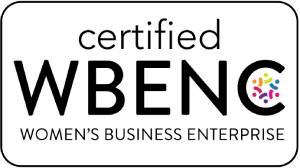 Many entrepreneurs and corporate leaders find themselves at a crossroads when their business or division begins to expand. What worked in the early stages—rolling up your sleeves, being involved in every decision, knowing every detail—no longer sustains growth. Yet, even seasoned leaders hesitate to make the shift from being the central operator to becoming the true CEO of an expanding enterprise.
Many entrepreneurs and corporate leaders find themselves at a crossroads when their business or division begins to expand. What worked in the early stages—rolling up your sleeves, being involved in every decision, knowing every detail—no longer sustains growth. Yet, even seasoned leaders hesitate to make the shift from being the central operator to becoming the true CEO of an expanding enterprise.
At the heart of this hesitation isn’t just a resistance to delegation. It’s a deeper, often unspoken fear: If I let go of the day-to-day, what will I do? For many, the thought of stepping back feels like stepping into irrelevance. The truth is, this fear blinds leaders to the very opportunities that come with growth.
The Fear of Letting Go
In the early days, every win was tied to your personal effort. That direct connection between action and result reinforced the idea that your involvement equals success. As the organization scales, however, clinging to this belief creates bottlenecks.
The fear isn’t always about losing control. It’s often about losing purpose. Without constant decisions to make and problems to solve, some leaders feel they’ll be left with nothing to do. But in reality, letting go of tactical execution opens the door to far greater—and more impactful—work.
What You Gain When You Level Up?
Instead of asking, “What will I do if I let go?” the more powerful question is, “What will become possible if I level up?”
Here’s what that shift makes room for:
- Vision Casting: Creating clarity for where the organization is consistent with its Contribution in the WorldTM.
- Enterprise Strategy: Spotting new markets, partnerships, and innovations that no one else has the perspective to see.
- Talent Multiplication: Developing leaders within your organization at every level who can carry the mission further faster than you ever could alone.
- Culture Stewardship: Integrating the values and creating an environment that will sustain growth and attract the right people in the right positions.
- Future Proofing: Anticipating shifts in technology, customer expectations, and industry trends—and positioning the organization ahead of them.
These are not “nice to have” activities; they are the core responsibilities of leading at scale.
Making the Shift: From Doing to Developing
Developing into a leader of people and a builder of enterprises requires intentional changes in mindset and practice:
- Redefine Your Value. Your worth is not in how many problems you solve, but in how effectively you position your organization for the ever-changing future.
- Shift From Operator to Orchestrator. Instead of being the center of every decision, design systems and empower others to make decisions aligned with the company’s foundational elements: Contribution in the WorldTM, Vision, Mission, and Values.
- Focus on Leverage. Ask: “What’s the highest and best use of my time?” That often means working on things that only you can do—building strategic relationships, securing resources, and setting direction.
- Build Leaders, Not Followers. Every time you answer a question or solve a problem someone else could handle, you reinforce dependence. Build capacity by teaching others to think, decide, and lead.
- Embrace The Space. The best strategic thinking often comes when you create space for reflection. Busyness is not effectiveness.
Expanding Your Leadership
The development from leader of an enterprise is not about losing relevance. It’s about expanding your bigger contribution your company can be in the world. Your team doesn’t need you to be everywhere; they need you to be the kind of leader who sees beyond the limitations, listens, and empowers.
When you step fully into the broader mindset—whether as an entrepreneur scaling a business or a corporate leader guiding a division—you discover that the real work of leadership isn’t about holding on tighter. It’s about letting go so that both you and your organization can rise to the next level.







Leave a Reply